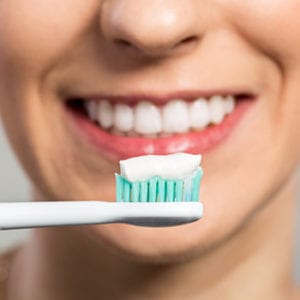 9 Tips on How to Brush Your Teeth the Right Way
9 Tips on How to Brush Your Teeth the Right Way
You brush your teeth every day, just like yo should. Why would you need a lesson in proper teeth brushing? Surprisingly, many people do not brush their teeth correctly, or with the right brush. Some individuals brush their teeth too aggressively, damaging their tooth enamel and wearing away their gum tissue. Others might miss some of those hard-to-reach places, or forget to brush their tongue, where a lot of bacteria resides. It’s easy to become complacent with an activity that you engage in on a daily basis, so we felt it was important to provide a refresher on teeth brushing so you can make sure you’re taking good care of your pearly whites.
Choose the Right Tooth Brush
Who knew that not just any old tooth brush will do? Next time you’re out shopping for a tooth brush, be sure to choose one that has soft, pliable bristles that can gently clean under your gums. Also consider the size of the brush head, the the size and flexibility of the handle, and whether or not the brush is approved by the American Dental Association.
You can also always ask your dentist for their recommendations. You might be best served with an electric toothbrush, for example, which could help to discourage aggressive, side-to-side brushing.
Be Gentle
Brushing too hard is actually a very common problem. While it might seem that brushing harder will clean your teeth better, you’re actually harming your teeth. Gentle brushing is much more effective for removing plaque, and it won’t damage your tooth enamel or cause your gums to recede (another unfortunate side effect of overzealous brushing). Instead of scrubbing, aim for massaging in a circular motion. Be kind to your teeth!
Don’t Rush
Two minutes, twice a day–that’s what every dentist recommends for brushing. Always give yourself the time you need to brush your teeth in the morning, and don’t skimp at night, either. You can set a timer if you need to, or, if you have an electric toothbrush, it will signal when your two minutes are up.
Switch Out Your Brush for a New One Every 3-4 Months
Sometimes we get attached to objects, even if they’re worn out and well past their prime. We’d advise changing out your toothbrush after 3-4 months. A brush with frayed, bent bristles is not as effective at cleaning your teeth and may even damage them.
It’s All in the Technique
Brushing your teeth in a back and forth motion can harm your gums and enamel. Instead, you should start at the gum line, then gently brush up and down in small, circular motions. As we mentioned above, you want to massage your teeth and gums, not scrub them as you would your bathtub.
Be Sure to Brush Along the Gum Line
Your gum line is a very attractive place for bacteria to congregate, but it’s also an area we often miss when brushing. Always try to get 1-3 millimeters under the gum line with your brush to dislodge any food debris or plaque. Remember, the chewing surface isn’t the only part of your tooth that needs to be kept clean!
To get just under the gum line effectively, we recommend angling the toothbrush at 45 degrees against the gum line, then brushing in small circular motions. Take your time and be thorough.
Don’t Forget the “Tongue Side” of Your Teeth
Surprisingly, it’s common for people to neglect to brush the inside-facing, or “tongue side” of their teeth. A lot of plaque can build up on the tongue side of the teeth and cause painful inflammation. Be sure to give your teeth the attention they deserve from every angle so you can remove as many traces of debris and plaque as you can.
Don’t Brush Immediately After a Meal
Immediately after eating, you’ll still have acid in your mouth, and if you start brushing too soon, this could weaken your tooth enamel. Give yourself about 20 minutes post-meal before brushing your teeth, and rinse your mouth out with water for good measure. This can help to remove any excess traces of acid.
Dedicate at least One of Your Two Daily Brush Sessions to the Whole Shebang
By whole shebang, we mean the works: brushing, flossing, and rinsing. Teeth brushing on its own is essential, but it doesn’t always dislodge pesky food debris or eliminate harmful bacteria. Go the extra mile at least once a day and add flossing and mouth rinsing to your brushing routine.
About Us
Small description of the practice goes here - maybe pull from the About Us page?
